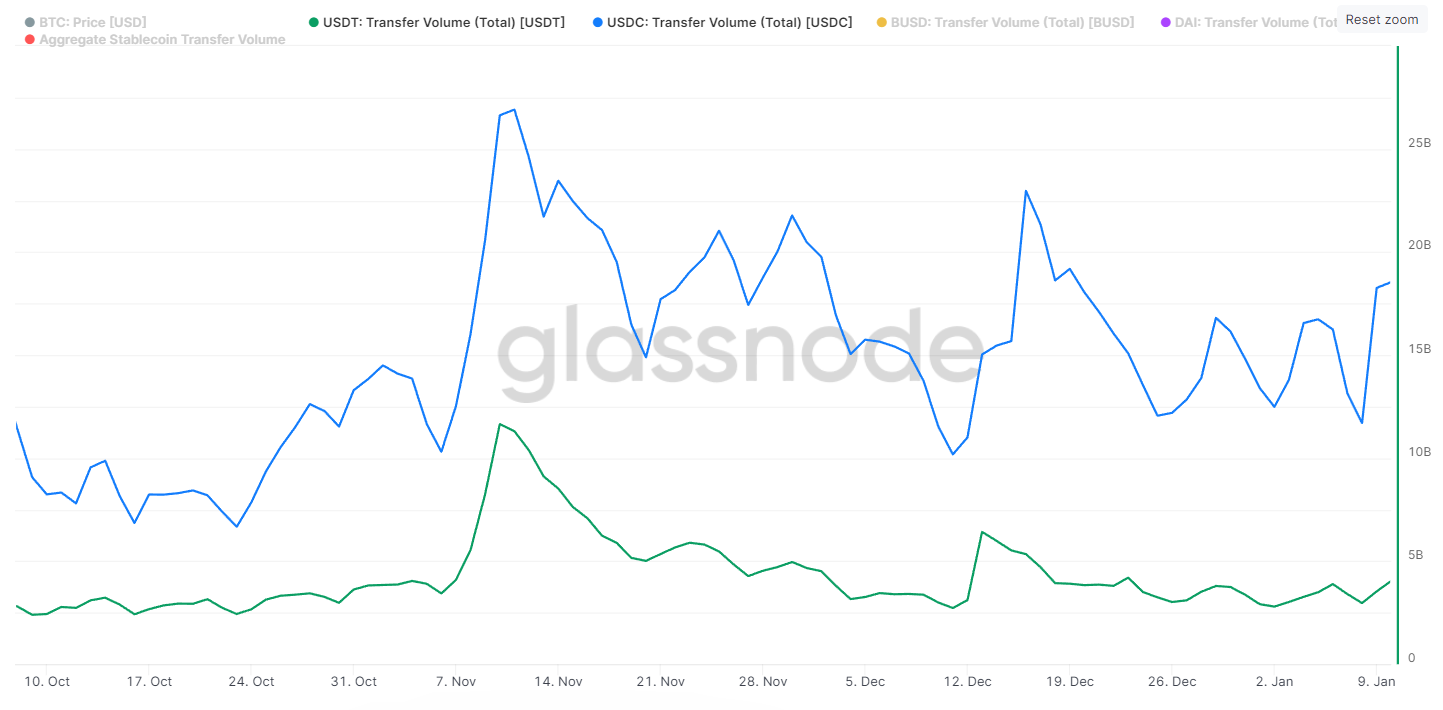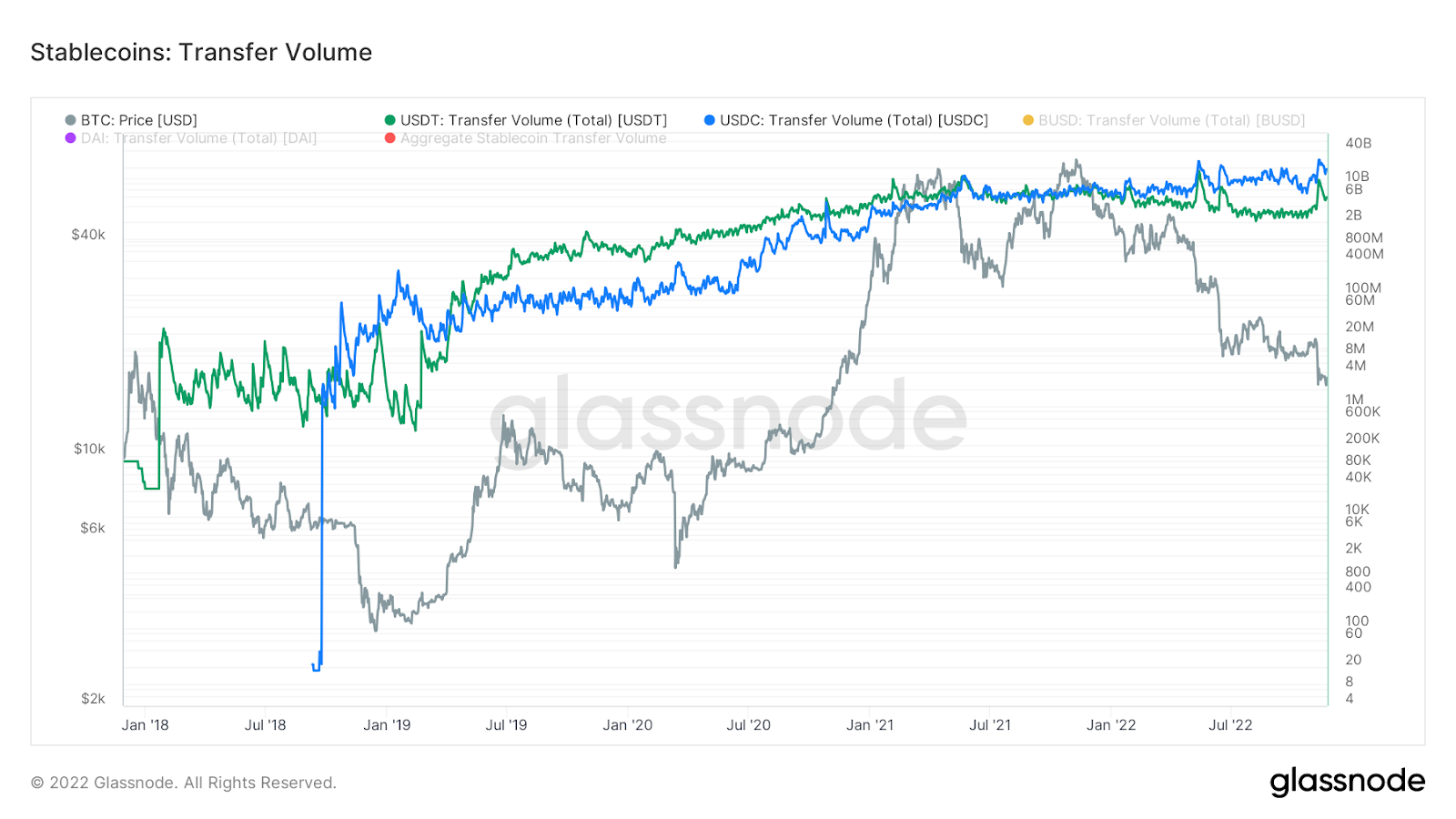The post The Battle For Stablecoin Dominance: USDC Dethrones USDT! appeared first on Coinpedia Fintech News
The two largest stablecoins by market capitalization, Tether’s USDT and Circle’s USDC, continue to compete for dominance in the market. As of recently, USDC has dethroned USDT in terms of transfer volume, according to an on-chain statistical study conducted by Glassnode.
Specifically, USDC transfer volume has averaged above 15 billion for the past three months, whereas USDT transfer volume has averaged below 5 billion during the same period. Notably, Tether’s USDT has lost one of its major customers, FTX and Alameda, which has contributed to a decrease in its transfer volume.
Despite this, Tether’s USDT has maintained its position as the top stablecoin in terms of market capitalization and daily trading volume.
According to market data provided by Binance-backed Coinmarketcap, USDT has a market capitalization of approximately $66,280,561,302 and a 24-hour trading volume of about $23,449,553,551. Additionally, according to on-chain data provided by etherscan.io, USDT has a total of 3,968,318 holders who have made 171,639,755 transfers.
On the other hand, Circle’s USDC has a maximum total supply of 40,745,274,208.26955 and a 24-hour trading volume of around $2,714,241,204. Additionally, according to on-chain data, USDC has a total of 1,578,797 holders who have made 57,695,025 transfers.
Among the largest holders of USDC include Maker, Binance, crypto.com, and the Polygon network, among others.

The divergence of Tether USDT and Circle’s USDC in transfer volume significantly increased after the Bitcoin price and crypto market began the 2022 bear market. This indicates that problems within FTX may have begun way earlier than the day SBF rang the alarms.

What Are The Institutional Investors Choosing?
The stablecoin market has gained significant popularity in recent years due to the high volatility of cryptocurrencies such as Bitcoin and Ethereum. Retail traders have been using stablecoins as a hedge against volatility, allowing them to take profits during bullish markets or protect their assets during bearish markets. However, mainstream adoption of cryptocurrency requires a highly transparent and audited stablecoin market to avoid instances such as those with Terra and Luna, and UST.
Circle’s USDC has gained favor among institutional investors, including BlackRock and BNY Mellon, due to its high level of transparency. For example, every month, Grant Thornton LLP, one of America’s largest audit, tax, and advisory firms, provides third-party assurance of the size of the USDC reserve.
In contrast, Tether’s USDT has struggled with providing reserve data over the years. Furthermore, Tether was fined over $40 million by the U.S. Commodity Futures Trading Commission (CFTC) for making misleading statements regarding its reserve data. This highlights the importance of transparency and trust in stablecoin markets, and the advantage of USDC as compared to its competitors.






